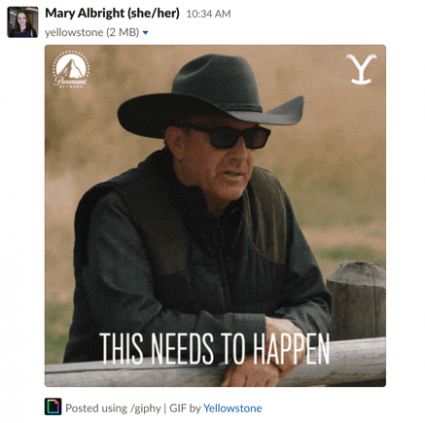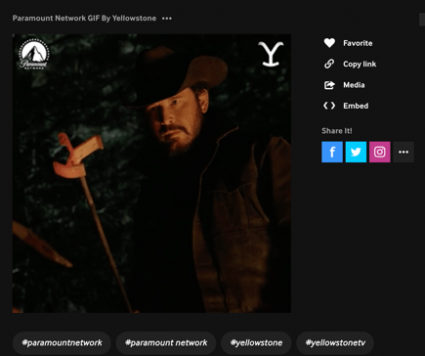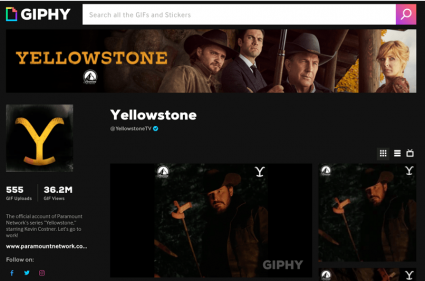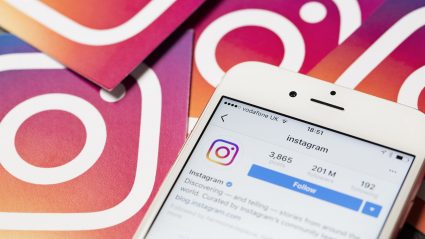We’ve all heard of growth hacking. We’ve all heard of gifs. But did you know that a branded gif strategy could be an excellent way to grow your brand awareness?
Let’s start at the beginning.
What is a gif?
GIF stands for Graphics Interchange Format and is a visual file format that is over 30 years old. Unlike JPEGs and PNGs, GIFs allow for moving images. They usually involve snippets from tv shows and movies or iconic personalities. In your content strategy, gifs have two main uses: engagement and brand visibility.
Why are gifs good for growth hacking?
Growth hacking is all about low cost, creative solutions that help your brand gain new customers and engage with the ones you already have. Branded gifs can do both of these things, balancing brand and performance marketing objectives. Their eye-catching motion graphics keep users interested, encouraging them to scroll through, read more, and perhaps even click to convert. The popularity of the file type and the rise of gif search engines like GIPHY and Tenor make the gif a great way to increase your brand visibility – a growth hacker’s dream.

When should I use gifs in digital marketing?
The medium we use to communicate with audiences is always important. In marketing, we build extensive customer personas to try to find exactly where your target demographic is and deliver the exact right message at the exact right time to coax them down the sales funnel. The channel you choose to use is obviously very important (i.e. Facebook vs Instagram vs Tikok), but the way you communicate that message is just as crucial.
As I write this, I can hear Marshall McLuhan’s seminal quote “the medium is the message” echoing in my head. Choosing to use a gif in communication rather than an image or text or even an emoji communicates something to your audience. Think about it at the micro-level: As you’re texting a friend you know the perfect gif that will provide the perfect amount of comedic relief to a tense situation. We choose a gif because it provides a certain je ne sais quoi that words often cannot.
Gifs are very community-centered and carry many levels of meaning. If you don’t watch the series Yellowstone (unrelated: drop everything and watch it this very instant, it’s so good and very gif-able!), you’re not going to understand all the nuances of this gif:

The gif means a lot more than the caption ‘What’s Next?” implies. Fans of the show will know the gif features Jimmy, a character in the show who was duct taped to a horse until he learned to ride. This character always overcomes unbelievable circumstances, emerging on the other side with a positive attitude and ready to take on more. That backstory is encapsulated in the medium of a gif but only understood by those who share the collective language of the show: die-hard Yellowstone fans like yours truly.
You should use a gif in your marketing communications if you want to meet your audience where they are, and communicate that your brand understands their specific, nuanced language.
Why do people love gifs?
According to the philosopher Charles Peirce, “we think only in signs”. Signs can be anything, from ancient Egyptian hieroglyphics to a red octagon. Both of those examples have no intrinsic meaning. But you and I both know that a red octagon means STOP (or at least suggests that you at the very least roll to a cool 5mph until you’re sure the intersection is clear). These signs have meaning because a group of people have collectively agreed upon their meaning.
Have you ever looked at a word like “the” and paused for a second because it seems strange to you, perhaps even misspelled? The letters “t”, “h” and “e” have no intrinsic meaning but together they are perhaps the most common article that we use in the English language. Likewise, gifs have become a collective language. People love to feel like they are part of an “inside joke” or special group that has exclusive access to something and that’s exactly what gifs provide.
Is there really an audience for gifs?
If you’ve gotten this far, you probably agree that GIFs are a valid medium of communication, so now let’s get into the tactics of how gifs fit into your digital marketing strategies. There are two ways to think about GIFs for your company. One is the organic and branding side, the other is through performance creative. We’re going to focus on the organic possibilities and brand exposure you can gain from creating branded gifs and optimizing them for search.
In 2020, alternative search engines, especially visual ones like Pinterest and GIPHY, are quickly gaining traction. In fact, the founder of GIPHY claimed that it was the second largest search engine behind Google in 2019. So yes, there is an audience… a very big audience. With 10 billion gifs served a day, it’s hard to ignore the importance of optimizing your gifs and having a brand presence on the platform.
Gif search engines like GIPHY and TENOR are not only standalone destinations that allow users to search for animated images, they are also connected to our Slacks, Instagrams, and even texting keyboards, extending their reach even further.
What does an optimized gif look like?
Now, let’s talk about GIF SEO, or GEO if you will. An optimized gif is one that is easy to find, has a small file size, and is posted to your fully filled out brand account on TENOR or GIPHY.
An optimized gif is searchable and findable
Gif Search Engines deliver relevant content to searchers through the help of hashtags. When you upload content to your GIPHY profile, you have the option to add tags to the asset. These in turn, tell GIPHY what your gif is all about and which queries it aligns with. Since gifs are commonly used to convey an emotion or reaction in conversation, try tagging your gifs with commonly searched terms that match the action in the image. That will help your content show up even when users aren’t explicitly searching for it with your brand name.

In platforms like Slack, optimized gifs contain a link to the brand channel, providing both an opportunity for brand name visibility and a pathway for users to go to your GIPHY channel and eventually your website.

Optimized gifs have tags that relate both to your brand and the sentiment of the gif itself.
An optimized gif has the right file requirements
Keep in mind that your potential customers are on their phones which are relatively small devices with small screens. Giphy’s file requirements suggest gifs are less than 6 seconds, less than 8MB, fewer than 100 frames and a resolution of 480p. The smaller and shorter your gif, the faster it’ll load.
An optimized gif comes from an optimized profile
Although we don’t optimize gifs for website conversion, you can and should link to your website from your GIPHY profile. If you work with a designer to create your gifs, make sure you still create your own brand GIPHY profile to upload them yourself.

How do I measure gif success?
On the organic side of the gif world, we care about visibility metrics. GIPHY provides brand and creator accounts with “view” counts that can be used to evaluate your gif’s reach. It is rare that someone using your branded gif in a slack conversation will drive traffic to your site. On platforms like Instagram, your gif stickers don’t even allow that kind of brand visibility. That’s why you need to think about the gif itself. Don’t forget to add a logo or other brand visual element to the gif.







Responses